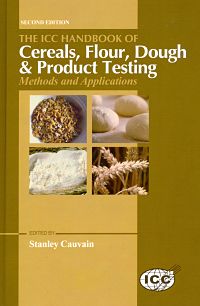SGL Technologies is ‘out-of-the-box’ problem solver
Belgium/ Dutch company offers engineering solutions that address critical food safety, hygiene and efficiency issues with non-traditional thinking.


Lennaert van Dijk, managing director of SGL Technologies, points out one of the features of the company’s versatile chips/chunks moulding lines.

At its production facility in Breda, Netherlands, assembly begins on a chips/chunks moulding, which features a rotary cooling wheel.

High efficiency water heating and cooling units.

The company also produces a range of food processing equipment.

The SGL Techonolgy’s specialty production line can create a broad range of products, ranging from chips and shavings to blossoms and rolls.






Even for the most creative chocolatiers, spinach and chocolate aren’t necessarily ingredients that inspire fusion. Often, engineers can find synergies where chocolatiers can’t. But even the most “out-of-the-box” thinkers might be hard-pressed to find inspiration and applicability in thinking about spinach and chocolate.
Not so, counters Lennaert van Dijk, managing director and one of the principals at SGL Technology, which has its head office and production facilities in Breda (The Netherlands) and a sales office in Kalmthout, (Belgium). In looking to design a more flexible, more hygienic, more compact and more efficient line to produce chocolate chips, chunks and shavings, the company’s engineers saw similarities in the way frozen spinach was produced.
“We had designed a method of freezing a spinach slurry on a steel-belt cooling tunnel and then depositing it as portion blocks onto a belt,” he says. “When you think about it, chocolate and the spinach slurry are high-viscous products that behave similarly.”
Indeed, trials involving the cooling drum /steel-belt technology showed the system worked as well on a chips/chunks moulding line as in a frozen spinach processing facility.
Van Dijk points out that previous designs for chip moulding lines focused on piston depositors similar to the ones used for moulding chocolate tablets. For chocolate tablets, exact dosing is critical.
“Keep in mind that chocolate chips are a semi-finished product; the first reaction is that the size isn’t important, rather it’s the quality,” he says. “With the rotary system we can dose chocolate very accurately according to exact specs and QA requirements from our customers. And since chips and chunks are used for decoration, size and looks become more critical for our customers.”
Van Dijk stresses that today the emphasis in chocolate processing focuses on preventing the wear and tear of parts, on reducing machine maintenance.
“With a rotary system, there are less mechanical parts, less movement, and less money needed for investment,” he continues. “Today, it’s all about reducing downtime, reducing changeovers, reducing maintenance. These are big cost centers in production and every confectionery company is looking to trim operating costs.”
As one might expect, there are several more innovations in SGL Technology’s chocolate chips/moulding line besides a cooling drum. For example, in addition to using an innovative “Trippplepass” combination of steel and FDA-approved PVC conveyor belts, which enables a smaller footprint (30 meters versus the traditional 90 meters), the cooling tunnel’s design promotes deeper and quicker cooling. This facilitates processing because chocolate crystallization can occur sooner.
“We can turn out 3,000 kilos per hour,” he says.
Despite such head-turning accomplishments, not everyone automatically embraced the new engineering and design applications configured into a chocolate chips/moulding line, van Dijk acknowledges.
“There’s a lot of emotion in chocolate,” he admits. “There are believers and non-believers in what we’re doing.”
However, when companies such as Barry Callebaut and Cargill embrace technical solutions offered by SGL, it’s clear that the company is making believers amongst the best.
“We are problem-solvers,” van Dijk emphasizes. “There are plenty of big box sellers and big box buyers out there. Companies are cutting cost centers such as engineering departments. Hence, people with knowledge are disappearing. So when someone delivers a machine, integrating such a line into operations is a challenge. No one knows how to do it.
“One of our added values is that we know what to do, we have 30 years of engineering experience,” he continues. “We have the disciplines here to give you the ‘Full Monty.’ When a customer asks us to set up a line, be it from a hand drawing, a computer screen or for a greenfield situation, we can do it.”
Not surprisingly, based on the spinach slurry example, SGL’s roots run deep in food processing.
“We have 30 engineers,” says van Dijk. In addition to producing engineering solutions to the chocolate industry, SGL Technology continues to supply equipment to the food processing industry, specifically vegetables, potatoes and fish products, such as shrimp. It’s familiarity with other food processing has enhanced its ability to deliver non-traditional — at times “breakthrough” — solutions to chocolate processing challenges.
In that context, flexibility and hygiene remain critical factors throughout all of food processing, van Dijk points out. In addition, the push toward shorter product life cycles has manufacturers looking for equipment that’s more flexible.
Moreover, an ongoing escalation of food safety standards, prompted by government and consumer concerns, has necessitated the implementation of more demanding hygienic parameters.
Having worked in the dairy industry, van Dijk understands the rigors of good hygiene in a working environment. Today, it’s all about “easy-to-clean” and eliminating cross-contamination, he adds.
Since debuting in 2009 at Pro Sweets, the company has made great strides in making a name for itself within the chocolate industry. Today, in addition to the chocolate chips/chunks moulding line, the company offers a multi-decoration line and a specialty chocolate line. Customizing lines to meet specific challenges, however, remains SGL Technology’s strong suit.
Still, as the new player on the block, van Dijk recognizes the need to “earn our place in the market.”
He’s confident, however, that SGL Technology will continue to shake up the traditional processing techniques prevalent in the industry.
“There’s much more coming,” van Dijk says.
Looking for a reprint of this article?
From high-res PDFs to custom plaques, order your copy today!













